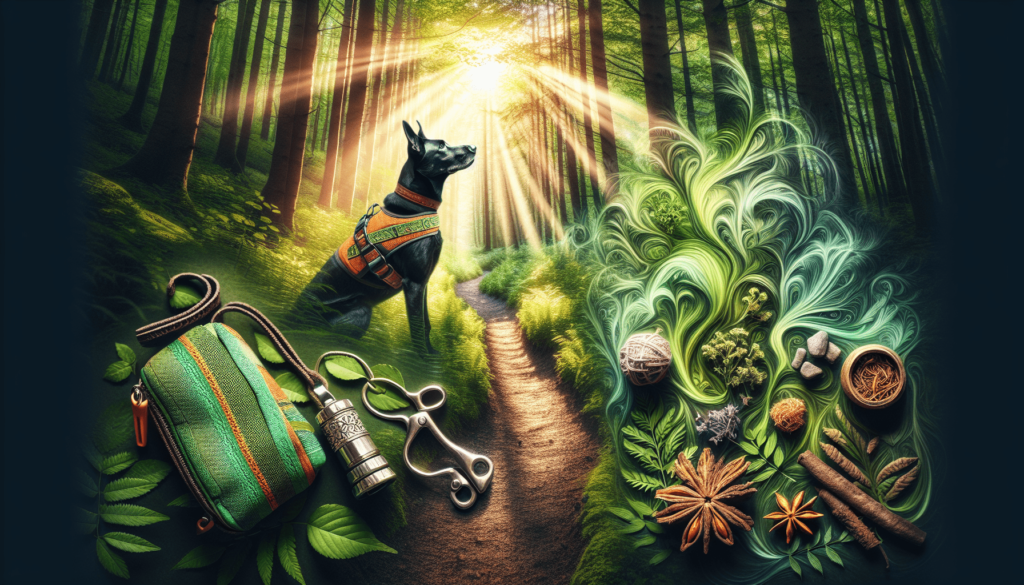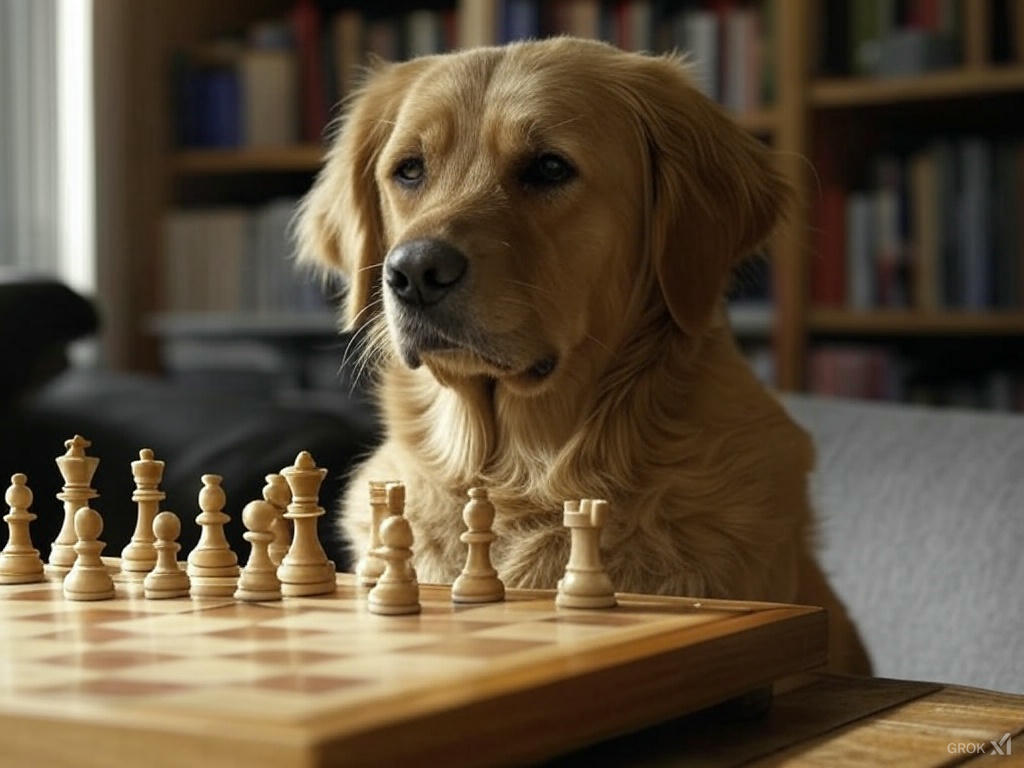What if you could turn your outdoor adventures into a thrilling sensory experience for your dog?
Imagine the joy on your pet’s face as they engage in scent training while you bask in the great outdoors.
It sounds fun, right? Scent training isn’t just about enhancing your dog’s skills; it’s also a wonderful way to strengthen your bond and create memorable moments together.
Understanding the Basics of Scent Training
What is Scent Training?
Scent training, at its core, is teaching your dog to locate scents.
This can include finding a specific object that carries a unique smell or identifying different types of scents in the environment.
It taps into their natural instincts and gives them a job to do, making them happier and more fulfilled.
Why is Scent Training Important?
Training revolves around more than just obedience. It’s about understanding your dog’s natural abilities and creating opportunities for them to excel.
Scent training channels their energy and intelligence, which can lead to a calmer, happier dog. Plus, it’s a fantastic outlet for their behavioral instincts.
How Do Dogs Use Their Sense of Smell?
Did you know that dogs have up to 300 million smell receptors? In comparison, humans have about six million!
This incredible olfactory ability allows dogs to detect scents at extraordinary levels.
Understanding this helps you appreciate just how engaging and enriching scent training can be for your furry friend.
What Are the Benefits of Scent Training for Dogs?
There are numerous benefits to scent training, ranging from improving your dog’s mental stimulation to increasing confidence.
It allows for a healthy outlet of energy and helps alleviate behavioral issues caused by boredom.
Additionally, it deepens your bond as you work together, enhancing trust and cooperation.
Preparing for Your Scent Training Adventure
What Supplies Do You Need for Scent Training?
Before you head out, gather a few supplies to streamline your scent training experience. First, think about using treats that your dog usually enjoys.
Next, consider acquiring a few scent articles: items with distinct odors like a favorite toy or a piece of clothing. A leash and some space to explore will also set the stage for success.
How Can You Set Up a Scent Training Environment?
Finding the perfect spot is essential. Look for environments that offer various scents and distractions, like parks or nature reserves.
Ensure the area is safe and that your dog can focus on the task at hand. Keep in mind that training in different locations can help your dog adapt to changes and challenges.
How Do You Get Your Dog Excited About Scent Training?
Getting your dog interested is paramount! Use high-value treats, toys, or even their favorite phrases to generate excitement.
Start with simpler exercises to build their confidence. Celebrate every success, no matter how small, to keep them engaged and eager to participate.
Should You Start with Basic Commands?
Absolutely! Before jumping into scent-specific tasks, ensure your dog understands basic commands like “sit,” “stay,” and “come.”
A solid foundation will help your dog feel more comfortable as you transition into scent training, making both the learning and the bonding experiences more enjoyable.
Fun Scent Training Exercises for Outdoor Lovers
What Are Some Introductory Scent Games?
Start with simple scent games that simultaneously teach and entertain your dog.
For instance, hide a treat under a cup, mix in some other cups, and let your dog figure out where it is. This engages their mind and teaches them to rely on their sense of smell.
How Can You Try Out a “Find It” Game?
The “Find It” game is a wonderful exercise. Begin by allowing your dog to see you hide a treat, then command them to find it.
As they get the hang of this, increase the difficulty by hiding treats in more challenging spots, gradually elevating the game’s complexity.
How About Scent Trails?
Creating scent trails is another great way to make outdoor adventures exciting. Use a treat or a favorite scent and create a trail for your dog to follow.
Gradually increase the distance between each scent marker as your dog becomes more proficient, enhancing their tracking skills.
What Are Some Advanced Scent Challenges for Experienced Dogs?
For those who want to push their dogs further, consider advanced challenges like scent discrimination, where you hide multiple scented items and ask your dog to only retrieve the one you’ve designated.
This requires focus and skill, making it an exciting challenge that will keep your dog engaged.

Incorporating Nature into Scent Training
How Can Natural Elements Enhance Scent Training?
Nature offers an array of smells that can stimulate your dog’s senses.
As you embark on your scent training journey together, take advantage of the different smells found in bushes, trees, and even flowers.
Mix in activities that involve these elements to deepen the training experience.
Why Should You Use Leaves and Twigs?
Using leaves and twigs is an excellent way to add variation to your scent training.
You can hide treats under leaves or among twigs, allowing your dog to explore and associate different smells with rewards.
This boosts their curiosity and leverages their natural instincts in a fun way.
Can You Explore New Locations for Varying Experiences?
Absolutely! Visiting new locations can provide fresh challenges for you and your dog.
Different environments offer new smells and distractions, honing your dog’s skills as they adapt to various surroundings.
Make it a fun routine to visit different parks or trails each week.
What Outdoor Challenges Can You Create?
Consider establishing outdoor challenges that involve real-world scenarios, like hiding a scent on a walking trail and asking your dog to find it.
This can lead to a more engaging adventure while teaching your dog valuable scent determination skills applicable in everyday life.
Building a Connection Through Scent Training
How Does Scent Training Strengthen Your Bond with Your Dog?
Scent training enhances your bond through shared experiences.
As you guide them through exercises and cheer on their successes, you’ll feel a growing trust and cooperation.
This not only strengthens your relationship but can also lead to a happier, more confident dog.
Why Is Positive Reinforcement Key in Training?
Positive reinforcement is crucial. Use treats, praise, or playtime to reward your dog after every successful task completed.
This creates positive associations and motivates your canine partner to be more engaged and willing to participate in future scent exercises.
How Can You Celebrate Your Dog’s Achievements?
Celebrate every milestone, big or small, to create lasting happiness and motivation.
Whether it’s through a special treat, some extra playtime, or a simple belly rub, acknowledging your dog’s accomplishments makes training a joyful experience and encourages enthusiasm for learning.
What Role Does Consistency Play in Strengthening Bonds?
Consistency is vital for developing trust. Regular training allows your dog to know what to expect, setting them up for success.
Make it a point to engage in scent training a few times a week to reinforce learned behaviors and foster an unapologetic commitment to learning.
Addressing Common Challenges in Scent Training
What Should You Do If Your Dog Loses Interest?
It’s common for dogs to lose interest at times. If you notice your dog getting distracted or bored, switch things up!
Change the location, try new smells, or modify the exercise. Keep it fresh and exciting to ensure your dog stays engaged and eager to learn.
How Can You Handle Distractions While Training?
Distractions can be a significant challenge during training.
If your dog is struggling to focus, remove distractions by choosing a quieter environment or training during less busy hours.
Gradually introduce distractions as your dog becomes more reliable in their training.
What if Your Dog Seemingly Doesn’t Understand?
If your dog is having a hard time grasping the concept, don’t worry! Patience is essential.
Break down the exercise into simpler components and reinforce basic commands. Sometimes, going back to basics leads to breakthroughs in understanding.
When Should You Seek Professional Help?
If you find that you’re struggling significantly or if your dog exhibits signs of anxiety or distress, it might be time to consult a professional trainer.
They can provide tailored strategies to help both you and your furry friend succeed in your training endeavors.
Taking Your Scent Training to the Next Level
What Advanced Techniques Can You Incorporate?
Once your dog has mastered the basics, consider advanced techniques like scent puzzles or even enrolling in nosework classes!
These classes provide structured training opportunities that elevate your skill set and teach your dog to navigate complex scent challenges.
How Can You Introduce Real-World Applications?
Consider how you can incorporate scent training into everyday life.
Practice scent work by hiding your keys or a specific item around the house and challenging your dog to find them.
This not only hones their skills but adds functional value to their training.
What Resources Can Help You Progress?
There’s a wealth of resources available, from books and tutorials to blogs and communities centered around scent training.
Joining a local dog training group or an online forum can connect you with other trainers and enthusiasts, providing a space for shared learning.
How Can You Encourage Lifelong Learning?
Finally, keep the momentum going! Make scent training a part of your regular routine and look for new challenges to keep things interesting.
Regular practice not only stays beneficial for your dog’s mental health but can provide plenty of fun memories along the way.
Conclusion
Embarking on scent training adventures not only enhances your dog’s skills but also enriches your shared outdoor experiences.
With a bit of planning and creativity, you can turn simple walks into engaging challenges that both you and your dog will cherish.
Remember, this journey is about exploration, joy, and strengthening the bond you share with your best friend.
So what are you waiting for? Grab those supplies, head outside, and start your scent training adventure today!
Frequently Asked Questions
- How long should each scent training session last?
- Aim for 10-15 minutes to keep your dog engaged without overwhelming them.
- Can all dogs participate in scent training?
- Yes, most dogs can enjoy scent training regardless of age or breed.
- What if my dog doesn’t like treats?
- Experiment with different rewards, like toys or praise, to find what motivates your dog.
- How often should I train my dog?
- Regular short training sessions, a few times per week, work well.
- What is the best age to start scent training?
- You can introduce scent training to puppies as early as 8 weeks, but older dogs can enjoy it too!
- Should I train indoors or outdoors?
- Both are beneficial! Begin indoors for controlled environments and gradually move outdoors for added challenges.
- How can I tell if my dog is enjoying scent training?
- Look for signs of excitement, tail wagging, and eagerness to engage. If they seem bored or stressed, reassess the activity.
- Is scent training only for working breeds?
- Not at all! All dogs, regardless of breed, can benefit from scent training.
- How do I make scent training more challenging?
- Increase the complexity of exercises or introduce new scents to keep your dog engaged and learning.
- Can scent training help with behavioral issues?
- Yes, scent training can provide mental stimulation that helps alleviate anxiety and boredom-related behaviors.
By focusing on engaging experiences and challenges, you create an environment where your dog feels valued and purposeful, leading to both a happier dog and stronger owner-pet relationship. ‘
Now it’s your turn – get out there and start this adventure together!
